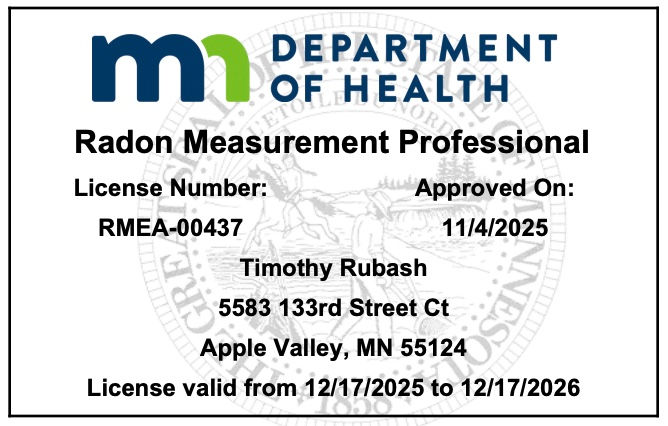Forever Chemicals - Twin Cities, MN
- timrubash
- Jan 20
- 4 min read
Updated: Jun 6
The Forever Chemicals: PFOAs, PFAs, and Their Impact on the Minnesota Twin Cities Area
In recent years, the growing awareness of “forever chemicals,” such as PFOAs (perfluorooctanoic acid) and PFAs (per- and polyfluoroalkyl substances), has sparked concern across the nation. These man-made chemicals, resistant to water, oil, and heat, have been linked to severe environmental and health issues. In the Minnesota Twin Cities area, the discovery of PFOAs and PFAs in water sources has highlighted the profound impact these substances can have on communities, including their potential effect on property values.
What Are PFOAs and PFAs?
PFOAs and PFAs are part of a large group of synthetic chemicals used since the 1940s in a variety of industrial and consumer products. These chemicals were prized for their nonstick and water-resistant properties, making them common in items such as nonstick cookware, water-resistant clothing, stain-resistant fabrics, and firefighting foams.
The problem with these chemicals lies in their stability—they do not break down easily in the environment or the human body, leading to the nickname “forever chemicals.” As they accumulate, they have been linked to adverse health effects, including:
• Increased cholesterol levels
• Immune system suppression
• Certain cancers, such as kidney and testicular cancer
• Reproductive and developmental issues
The Discovery of Forever Chemicals in the Twin Cities
Minnesota’s Twin Cities area has become a notable example of the contamination caused by forever chemicals. The issue came to light in the early 2000s when the 3M Company, a major industrial player in Minnesota, was implicated in the contamination of local water sources.
3M had manufactured PFAs at its Cottage Grove facility for decades. Waste disposal practices, including the dumping of chemical waste in landfills and unlined pits, led to the seepage of these harmful substances into groundwater. Testing in areas such as Woodbury, Cottage Grove, Oakdale, and Lake Elmo revealed alarming levels of PFA contamination.
The state of Minnesota sued 3M in 2010, alleging that the company had knowingly contaminated the water supply. In 2018, 3M reached an $850 million settlement with the state, funds intended to address water contamination and restore natural resources.
Health and Environmental Concerns in the Twin Cities
The discovery of PFOAs and PFAs in the Twin Cities raised significant health and environmental concerns. Residents of affected communities have voiced fears about potential long-term health effects, including cancer risks and developmental issues in children. Contaminated water sources have necessitated costly remediation efforts, including installing filtration systems and drilling deeper wells.
The environmental impact is equally concerning. These chemicals have contaminated lakes, rivers, and wildlife in the Twin Cities area. The Mississippi River, a vital waterway, has also been affected, raising concerns about the broader ecosystem.
Effect on Property Values
One of the less-discussed but critical aspects of PFOA and PFA contamination is its impact on property values. The presence of forever chemicals in a community can significantly influence home prices and real estate market trends. In the Twin Cities area, several factors come into play:
1. Stigma and Public Perception
Homes located in areas associated with PFA contamination often carry a stigma that deters potential buyers. Even if remediation efforts are in place, the lingering association with toxic chemicals can reduce buyer confidence. This stigma is particularly pronounced in cities like Lake Elmo and Oakdale, where residents have actively raised concerns about water safety.
2. Higher Costs for Homeowners
Contamination often leads to higher costs for homeowners, including increased water bills due to filtration systems or additional costs to connect to alternative water sources. Potential buyers may view these extra expenses as a deterrent, further impacting property values.
3. Legal and Regulatory Uncertainty
The evolving nature of regulations surrounding PFAs can add an element of uncertainty to the real estate market. Homebuyers may worry about future liabilities or the possibility of new contamination discoveries, leading to hesitancy in investing in affected areas.
4. Decline in Desirability
Communities that gain notoriety for contamination issues often see a decline in desirability. Families seeking safe, clean environments may avoid these areas altogether, reducing demand for properties and driving prices downward.
5. Uneven Recovery
While remediation efforts can improve water quality, the real estate market often takes longer to recover. The Twin Cities area has seen some progress, but it will take years to fully rebuild trust and restore property values to their pre-contamination levels.
Potential for Recovery
Despite these challenges, there is potential for recovery in the Twin Cities area. Several factors could help mitigate the impact of forever chemicals on property values:
1. Comprehensive Remediation Efforts
Minnesota’s $850 million settlement with 3M is being used for water treatment projects, including advanced filtration systems and alternative water sources. These efforts can reassure residents and potential buyers about the safety of the local water supply.
2. Transparency and Public Engagement
Communities that prioritize transparency and public engagement are more likely to rebuild trust. Providing regular updates on remediation efforts, conducting health studies, and involving residents in decision-making can help restore confidence.
3. Real Estate Disclosure Practices
Mandating the disclosure of contamination history and remediation measures during property transactions can protect buyers and sellers alike. While disclosure may initially deter buyers, it can ultimately foster trust in the market.
4. Long-Term Investments
Investing in community amenities, such as parks, schools, and public spaces, can help offset the negative perception caused by contamination. These improvements can make affected areas more attractive to potential buyers over time.
5. Federal and State Regulations
Stronger federal and state regulations on PFOAs and PFAs can prevent future contamination and provide clear guidelines for addressing existing issues. Robust regulatory frameworks can help stabilize property markets and reassure residents.
For more information on this topic: Fox News Interview with a former 3M Scientist






Great article!!!